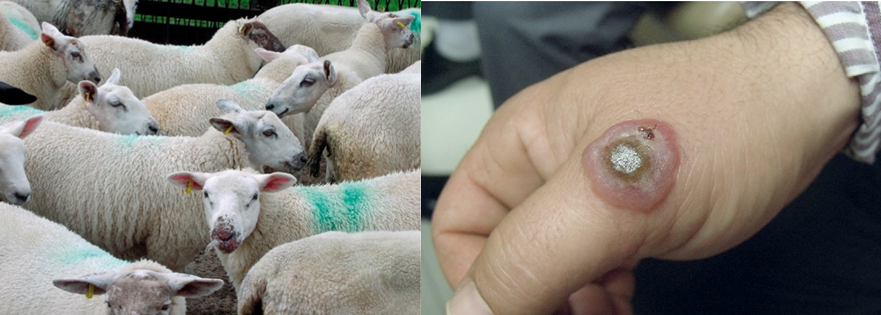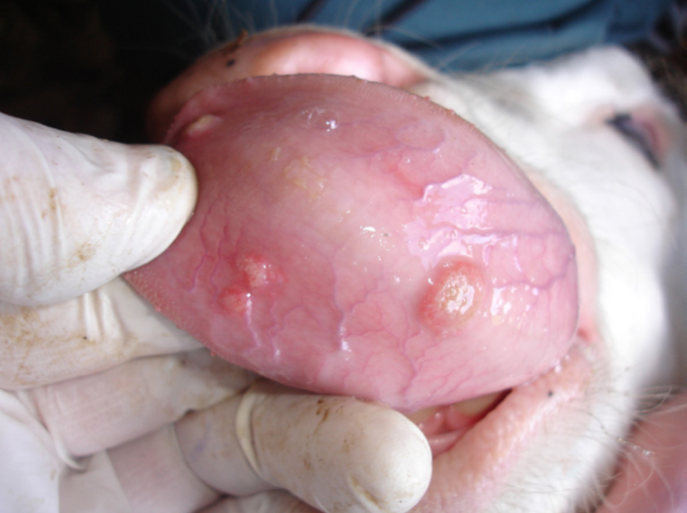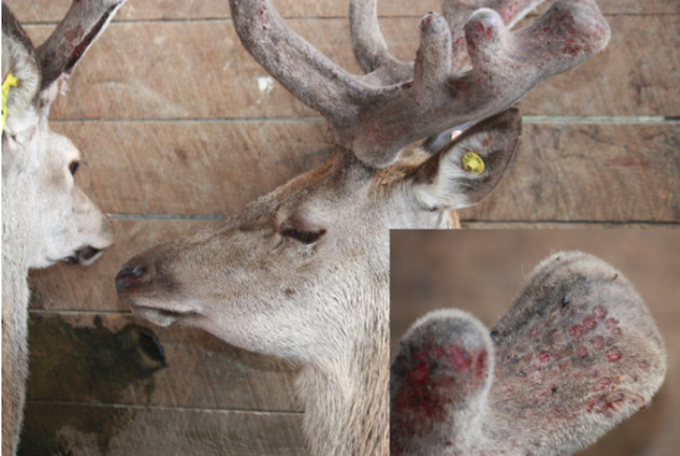Saeed Sharif & David Tisdall
Parapoxviruses (PaPVs; genus Parapoxvirus) infect a wide range of species generally causing localised cutaneous lesions. The genus comprises four species: Orf virus (ORFV), Bovine papular stomatitis virus (BPSV), Pseudocowpox virus (PCPV), and Parapoxvirus of red deer (PVNZ). The most common hosts of PaPVs are ruminants, including sheep and goats (infected by ORFV), cattle (infected by BPSV and PCPV), and deer (PVNZ). Wildlife, including seals and sea lions can also be infected. All PaPVs are known to be zoonotic, infecting humans after direct or indirect contact with infected animals.
Disease presentations
Orf is a common disease of sheep, causing papules and vesicles on the lips (‘scabby mouth’) and sometimes around the nostrils and eyes (Figure 1). Lesions can also develop on the udders when ewes suckle infected lambs. Lesions heal within about one month however infective virus can persist in dried scabs in the environment for long periods. Vaccination with a live, non-attenuated virus is practiced in some countries, including New Zealand.

Pseudocowpox occurs in dairy herds worldwide. Infection can occur on muzzles of nursing calves and on the teats of milking cows, infection occurring through small abrasions during milking or by mechanical virus transmission by flies.
BPSV causes lesions on the muzzle, margin of the lips and buccal mucosa mainly in cattle less than two years of age (Figure 2). Suckling calves may produce lesions resembling pseudocowpox on their mother’s teats.
PVNZ causes scabby lesions on the muzzle, lips, face, ears, neck, and velvet, causing significant economic losses (Figure 3).


Laboratory diagnosis
Currently laboratory diagnosis of PaPV infection in New Zealand relies on histology. Molecular techniques are widely used for detection of PaPVs, and differential diagnosis of more serious diseases like foot-and-mouth disease virus, Bluetongue virus and bovine herpes virus 2 is important.
New tests now available
Awanui Veterinary is now offering a rapid, reliable, and cost-effective qPCR assay for the generic diagnosis of Parapoxviruses. More specific qPCR assays may become available to differentiate PaPV species.
The test can be used where proliferative lesions are found on the skin or oral mucosa of suspect cases. The samples can include scab material, skin lesion or dry swabs of lesions.

